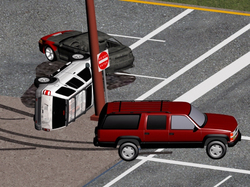| Alan Garrow Didache |
The Synoptic Problem
Matthew used Luke - and a new view of 'Q'

The challenge of solving the Synoptic Problem is a bit like trying to reconstruct the events of a multi-vehicle traffic accident. With an accident there are various bits of data like skid marks, damage to street furniture and damage to the vehicles themselves. The task of the reconstructor is to find a way of accounting for all these skids, dents and knocks within a coherent overarching story.
When it comes to the Synoptic Problem, there are three pieces of data that have proven particularly difficult to fit into one overall narrative:
My solution is the Matthew Conflator Hypothesis - which argues that Matthew used Luke directly (satisfying data points 1 and 3) while also sometimes conflating Luke with Luke's own source (satisfying data point 2). A series of short videos explaining this theory is available here. The Matthew Conflator Hypothesis generates a fresh conception of the hypothetical entity 'Q' which, in turn, introduces the possibility that instances of 'Q' may, after all, be extant. Videos presenting an 'An Extant Instance of 'Q'' are available here. The Matthew Conflator Hypothesis falls within the group of solutions now generally known as the Matthean Posteriority Hypothesis (MPH). Further resources relevant to the MHP are:
|
Heard [one] of [the] most scintillating papers of my life, tonight, by Alan Garrow on the Synoptic Prob. His Matt Conflator Hypothesis makes sense. Links to videos
|

